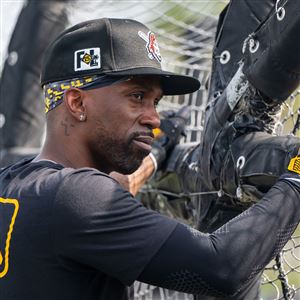Jonathan Kirsch's challenging exhumation of the Byzantine, bizarre life of Herschel Grynszpan is an attempt to give a consequential, odd figure his due. A would-be hero who in some ways actually was one, Grynszpan also may have been a kind of sexual pioneer, bursting stereotype to muck up the Nazi apparatus. Be forewarned: some of his mystery remains.
"THE SHORT, STRANGE LIFE OF HERSCHEL GRYNSZPAN"
By Jonathan Kirsch
Liveright ($27.95).
Subtitled "A Boy Avenger, a Nazi Diplomat and a Murder in Paris," Mr. Kirsch's book reads like a thriller. Not only is it painstakingly researched, it's also fair-minded and skeptical. In embracing the ambiguity of his subject, Mr. Kirsch illuminates a shadowy man he winds up celebrating -- with qualifications.
In the winter of 1938, Grynszpan was a Polish refugee of murky provenance hiding out in Paris when, at age 17, he walked into the German embassy of the Vichy government and fatally shot Ernst vom Rath, a Nazi diplomat whose sexual haziness eerily mirrored his own.
The event became an arrow in the burgeoning Nazi quiver and is said to have prompted Kristallnacht, perhaps the first international sign of the Third Reich's genocidal designs.
It is easy to picture the hothouse flower Grynszpan as a handsomer, more appealing version of Hans Beckert, the child murderer Peter Lorre portrayed in "M," Fritz Lang's prescient 1931 film about German psychopathology.
Mr. Kirsch describes Grynszpan as small, almost childlike, but also brooding and magnetic. While his sexual predilection remains unclear, he used sexuality so boldly and subversively that he hobbled the Nazi propaganda machine.
Initially, Grynszpan's point-blank killing of vom Rath on Nov. 7, 1938, gave the Nazis cover for Kristallnacht, the pogrom they launched two days later. Grynszpan, meanwhile, justified his act as a protest against the persecution of Jews throughout Europe.
Joseph Goebbels, the Nazi minister of propaganda, was quick to spin it, striking "the first note of the leitmotif that runs through all of the Nazi propaganda about the Grynszpan case -- the boy who pulled the trigger was merely the cat's-paw of an international Jewish conspiracy."
It also prompted international journalistic scrutiny of the Nazis, jeopardized Grynszpan's similarly stateless relatives, earned him disdainful (Mr. Kirsch also suggests mean and unsubstantiated) mention in Hannah Arendt's "Eichmann in Jerusalem," and made him the focus of a show trial the Nazis wanted to stage as evidence of the "Jewish conspiracy."
Grynszpan offered no resistance after he shot vom Rath and continued to assert he'd acted alone. Vincent de Moro-Giafferi, a canny lawyer, took on his case and suggested Grynszpan recast his story as a crime of passion stemming from a failed homosexual liaison. Grynszpan refused.
Years passed as Grynszpan was shuttled around the Reich and the Nazis reconsidered their goal in putting him on trial. By 1941, such a spectacle "was to be, above all, an extravaganza of Nazi propaganda."
Leave it to our young man to throw a spanner in the works; he told his last Nazi interrogator that, in fact, he and vom Rath had had an affair he had wanted to break off; shooting vom Rath in the heat of the dispute was the solution. Apparently, Grynszpan finally saw the value of the argument lawyer Moro-Giafferi had proposed years earlier.
"He seemed to recognize that the Nazis -- and Hitler himself -- regarded homosexuality with fear and loathing," Mr. Kirsch speculates. "He must have also known that any sexual contact between 'Aryans' and Jews had been criminalized under the Nuremberg Laws. So Herschel understood that any suggestion that an official emissary of the Third Reich was a sexual predator with a taste for Jewish boys would be an embarrassing and even explosive matter."
Capricious, shadowy and ultimately untraceable -- no record of his death day exists besides May 8, 1945, which Mr. Kirsch terms the "legal fiction" German courts applied when "the actual date of a Nazi murder could not be determined" -- Grynszpan tests notions of heroism and of Jewish resistance to the Nazis.
There is no doubt that Grynszpan did resist. One wonders what kind of career this troubled, self-aggrandizing boy-man might have chosen had he emerged from World War II.
First Published: August 21, 2013, 8:00 a.m.
















